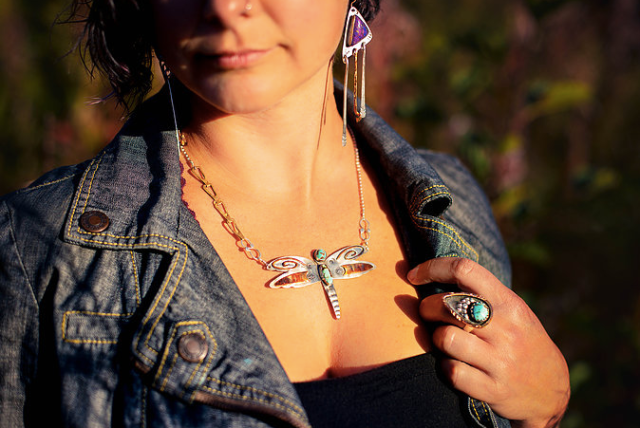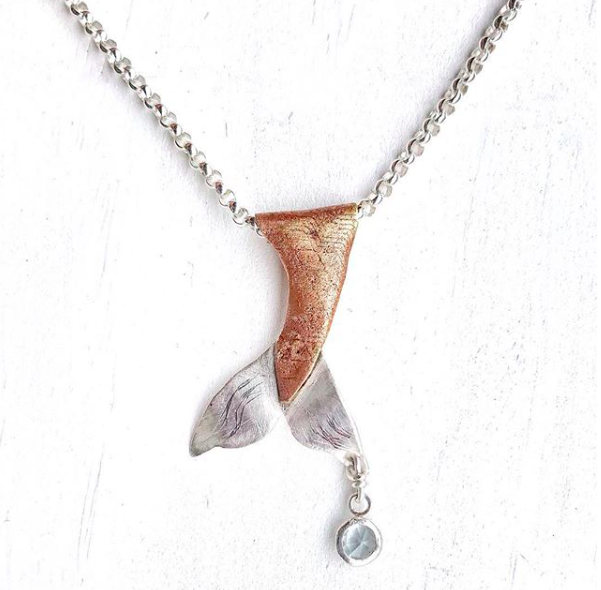
“DISPLACED”
“It begins with a concept, a notion, or a thought. Then I research and develop this idea into images.” Frances Crowe is a renowned fiber artist based in Roscommon, Ireland. While she lives and works in a country where the weaving community is small, her artwork has been recognized and exhibited internationally. In 2017 Crowe was the first Irish artist ever selected to be a part of the International Fiber Arts Festival in Shenzen, China.
Crowe studied at the National College of Art and Design in Dublin, originally with a focus on painting. Textiles would open up a new world of expression. “I became fascinated by the work of some of the textile students. I had the ambition to marry textiles and painting together. As it was frowned upon for a fine artist to work in the textile department, I managed to learn some very basic skills from one kind teacher which I developed myself by practice over time.” After graduation, Crowe would relocate to the quieter town of Roscommon in Western Ireland but maintain her tapestry practice. She became a teacher in a community school for many years, but continued to experiment creatively and create commissioned works. Tapestry has become an uncommon choice for fine artists. For Crowe, the medium is an intrinsic mode of expression. “I believe it is the repetition and the slow process which calms me down. As I move fast and think fast much of the time. It is meditative and it feels good for the soul. I also love wool and yarns of any type. I adore colour and texture. I see it as painting with yarn.”
Crowe’s artwork depicts a dialogue with her surroundings that is both contemplative and imaginative. Viewing her work often leads someone to be swept into her rumination. Memory, emotion, and the storied scenery of Ireland have often been the focus of her tapestries throughout the years. Crowe’s recent tapestry Displaced has taken the artist’s interaction with her surrounding into different territory. The plight of Syrian refugees – their perilous travels over the Mediterranean Sea and search for a safe haven – led her on a journey. Crowe studied The Great Irish Famine of the 1840s. In this she found connections between the journey that her forebears took to North America and the current experience of Syrian refugees. This process began with historical study and an examination of the current crisis. Crowe then had the opportunity to teach refugees to weave and heard their stories firsthand. This developed into dynamic artwork. Displaced is intended to tell a story of forced migration and its tragic realities for the diverse communities that share this experience. With this work, the depth of Crowe’s ability pulls the ancient expression of tapestry through time to connect people of many nations and open a space for communication.
Displaced has a far-reaching impact. Earlier this year, Crowe was invited to be a round-table speaker at the Premier International Tapestry Exhibition in Oakville in Toronto, Canada. There, she discussed her knowledge and opinions about the future of contemporary tapestry as an art form. Displaced was also on view at the exhibition.

“CHALICE OF MEMORIES”

“HELICOPTERS IN WATER”
The artist also engages communities through education. Crowe continues to teach, but in a different capacity. Her weaving studio serves also as a workshop space. The whimsical setting is complete with a garden. Crowe teaches both adults and children, and when asked, keenly describes how each population approaches art making. “Children are like an open book. They LOVE everything about my studio, the garden, the materials, the creativity, the process, and just having fun learning. The adults usually come with some preconceived notions about weaving a panel for the sitting room wall, only to discover there is a lot of learning involved, much practice, and development is very slow. However, there is a growing community of eager learners out there of all ages.” Dublin’s National College of Art and Design no longer offers a tapestry course of study. Contemporary interest continues to grow, drawing people to workshop classes.

“TURMOIL”
Since the completion of Displaced, Crowe has continued to explore social and cultural commentary through tapestry. Turmoil is the story of what Crowe calls “the Graveyard in the Sea.” It is another tragic image about the realities of current events. “Since I finished weaving the Displaced piece, I immediately begun work on a tapestry which I call Turmoil. It has not been shown anywhere as yet. The image relates to a family struggling and becoming submerged in the ocean. I hope I have created a very beautiful tapestry about a very dark almost daily event happening in Europe.” Next, she will explore new territory and introduce new materials: “Currently I am creating a new body of work based on the ‘Disappeared.’ People who leave home for one reason or another and never return. I am experimenting with new materials and hope to weave a shadowy almost transparent image of a mother and child. The warp is nylon yarn stretched over a homemade metal frame. This work will be shown at an exhibition in the Roscommon Arts Centre opening on August 11th 2019.”
Learn more about Frances Crowe and view this video from Mimar Media about the creation of Displaced here.

CROWE WITH “TURMOIL”







